| [1] Adams JE. Advances in bone imaging for osteoporosis. Nat Rev Endocrinol. 2012; 9(1): 28-42.
[2] Coipeau P,Rosset P,Langonne A,et al.Impaired differentiation potential of human trabecular bone mesenchymal stromal cells from elderly patients.Cytotherapy.2009; 11: 584-594.
[3] Wagner W, Wein F, Seckinger A, et al. Comparative characteristics of mesenchymal stem cells from human bone marrow, adipose tissue, and umbilical cord blood. Exp Hematol. 2005;33(11): 1402-1416.
[4] Yoshimura H, Muneta T, Nimura A, et al. Comparison of rat mesenchymal stem cells derived from bone marrow, synovium, periosteum, adipose tissue, and muscle. Cell Tissue Res.2007;327 (3): 449- 462.
[5] Srouji S,Livne E. Bone marrow stem cells and biological scaffold for bone repair in aging and disease. Mech Ageing Dev.2005;126( 2): 281-287.
[6] Zhu X, Du J, Liu G. The comparison of multilineage differentiation of bone marrow and adipose-derived mesenchymal stem cells. Clin Lab. 2012;58: 897-903.
[7] 中华人民共和国科学技术部.关于善待实验动物的指导性意见. 2006-09-30.
[8] 李素萍. 骨质疏松动物模型的研究现状[J].中国组织工程研究与临床康复, 2011, 15(20): 3767-3770.
[9] Chachra D, Lee JM, Kasram, et al. Differential effects of ovariectomy on the mechanical properties of cortical and cancellous bones in rat femora and vertebrae. Biomed Sci Instrum.2000;36: 123-128.
[10] Liu Y, Wang L, Fatahi R, et al. Isolation of murine bone marrow derived mesenchymal stem cells using Twist2 Cre transgenic mice. Bone. 2010;47: 916-925.
[11] Javazon EH, Beggs K, Flake AW. Mesenchymal stem cells: paradoxes of passaging. Exp Hematol.2004;32(5): 414-425.
[12] Delmas P. Clinical usefulness of biochemical markers of bone remodeling in osteoporosis. Rev Prat. 1995;45(9):1102-1105.
[13] Bala Y, Farlay D, Chapurlat RD, et al.Modifications of bone material properties in postmenopausal osteoporotic women long-term treated with alendronate. Eur J Endocrinol. 2011; 165(4): 647-655.
[14] Pinzon R. The clinical profile and risk factors of postmenopausal lumbar osteoporosis. International Journal of Rheumatic Diseases, 2010,13:171.
[15] 中华医学会骨质疏松和骨矿盐疾病分会.原发性骨质疏松症诊治指南(2011年).中华骨质疏松和骨矿盐疾病杂志, 2011, 4: 2-17.
[16] Shil AB, Greer JR. Screening strategies for treatment of osteoporosis in long-term care residents. Am Geriatr Soc. 2012;60(12): 2383-2384.
[17] 王强,赵兵,李超,等.干细胞移植治疗骨质疏松[J].中华骨质疏松和骨矿盐疾病杂志,2012, 5(3): 225-229.
[18] Kumar S, Chanda D, Ponnazhagan S. Therapeutic potential of genetically modified mesenchymal stem cells. Gene Ther. 2008;15(10):711-715.
[19] Rosen CJ, Bouxsein ML.Mechanism of disease: Is osteoporosis the obesity of bone? Nat Clin Pract Rheumatol. 2006;2(1):35-43.
[20] Astudillo P,Rios S,Pastenes L,et al.Increased adipogenesis of osteoporotic human-mesenchymal stem cells ( MSCs) characterizes by impaired leptin action.Cell Biochem.2008; 103: 1054-1065.
[21] Kretlow JD, Jin YQ, Liu W, et al. Donor age and cell passage affects differentiation potential of murine bone marrowderived stem cells. BMC Cell Biol. 2008;9: 60.
[22] Zhou S, Greenberger JS, Epperly MW, et al. Age-related intrinsic changes in human bone-marrow-derived mesenchymal stem cells and their to osteoblasts. Aging Cell.2008 ;7: 335-343.
[23] Rodriguez JP, Montecinos L, Rios R, et al. Mesenchymal stem cells from osteoporotic patients produce a type I collagen- deficient extracellular matrix favoring adipogenic differentiation. Cell Biochem.2000;79: 557-565.
[24] Peng S, Xia R, Fang H, et al. Effect of epimedium-derived phytoestrogen on bone turnover and bone microarchitecture in OVX-induced osteoporotic rats. J Huazhong Univ Sci Technolog Med Sci. 2008;28(2): 167-170.
[25] Tahompson D,Simmons HA,Pirie CM,et al.FDA guidelines and animal models for osteopomsis.Bone.1995;17(2): 125-133.
[26] 郑良朴,李远志,胡海霞,等.不同月龄大鼠去卵巢骨质疏松模型的比较[J].福建中医药,2009,40(2):50-51.
[27] 蔡鹏,朱绍兴,苏一鸣,等.全骨髓贴壁法分离培养大鼠骨髓间充质干细胞及其诱导分化[J].中国组织工程研究与临床康复, 2009, 13(36):7073-7077.
[28] Schonau E, Rauch F. Markers of bone and collagen metabolism-problems and perspectives in paediatrics. Horm Res.1997;48: 50-59.
[29] See EY, Toh SL, Goh JC. Multilineage potential of bone-marrow-derived mesenchymal stem cell cell sheets: implications for tissue engineering. Tissue Eng Part A. 2010; 16(4): 1421-1431.
[30] 张英,袁月,孙富丽,等.成骨细胞胞内胞外碱性磷酸酶含量比较[J]. 中国医科大学学报, 2011, 40(10): 874-884.
[31] Imene B, Suganya S, William TW. Autologous bone marrow derived rat mesenchymal stem cells promote PDX-1 and insulin expression in the islets,alter T cell cytokine pattern and preserve regulatory T cells in the periphery and induce sustained normoglycemia. Autoimmun.2009;32(1)33-42.
[32] Farley JR, Stilt-Coflfing B. Apoptosis may determine the release of skeletal alkaline phosphatase activity from human osteoblast-line cell. Calcif Tissue Int. 2001;6868(1): 43-50.
[33] Ovesen O, Riegels P, Lindequist S, et al. The diagnostic value of digital substractiotn, arthrography and vadionuclide bone scan in revision hip arthroplasty. Jarthrolasty.2003;18 (6): 735- 740.
[34] Versluis RG, Papapoulos SE, Zwinderman AH, et al.Clinical risk factors as predictors of postmenopausal osteoporosis in general practice. Br J Gen Pract. 2001;51: 806-810.
[35] Tondreau T, Dejeneffe M, Meuleman N, et al. Gene expression pattern of functional neuronal cells derived from human bone marrow mesenchymal stromal cells. BMC Genomics.2008;11(9): 166-171.
[36] Yamaza T, Miura Y, Bi Y, et al. Pharmacologic stem cell based intervention as a new approach to osteoporosis treatment in rodents. Plos One.2008;3(7): 2615-2619. |
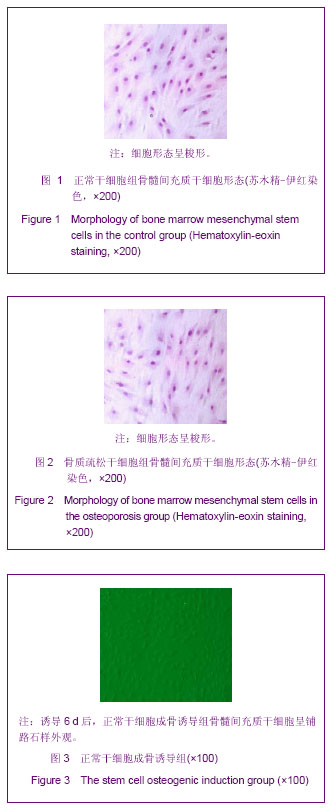
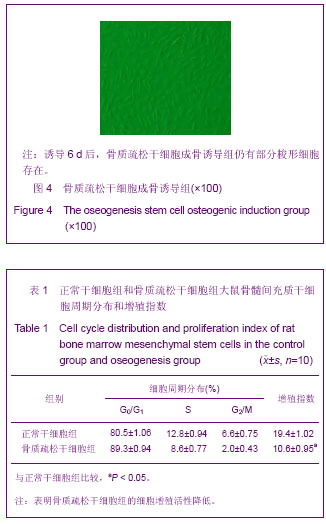
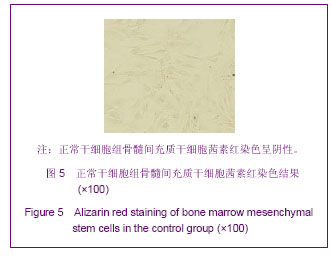
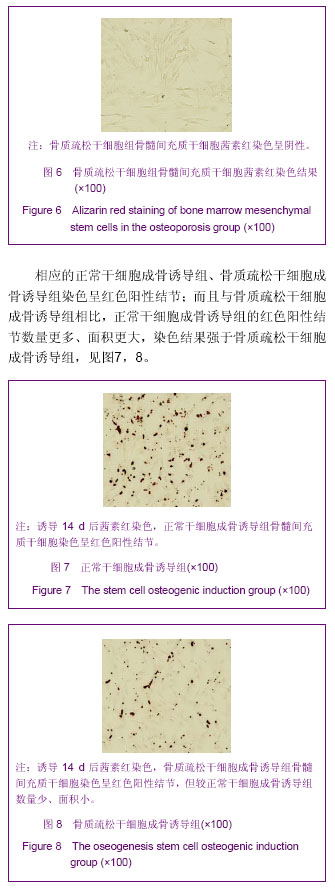
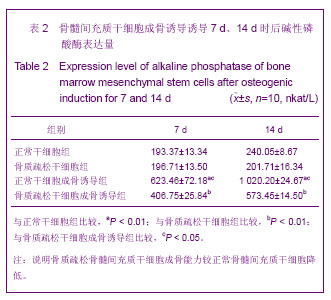
.jpg)